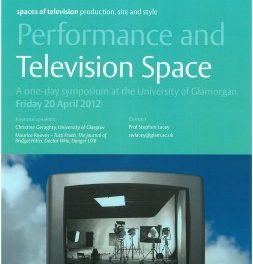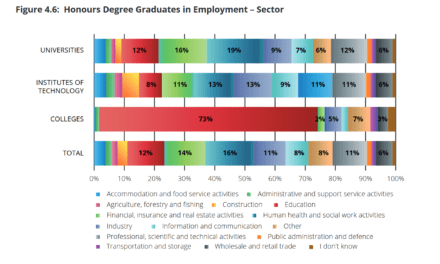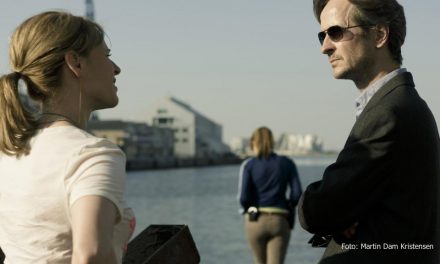In this series of blogs Andreas Halskov interrogates the work of Mary Harron. The first part covers her background before moving onto discuss her work on some of the most iconic TV series on American TV.
“… for it is the fate of a woman
Long to be patient and silent, to wait like a ghost that is speechless
Till some questioning voice dissolves the spell of its silence.”
– Henry Wadsworth Longfellow, quoted in Alias Grace (CBS Television/Netflix, 2017, 1:2)
February 7, 2015 was a noteworthy date in the history of television. On this day, the Directors Guild of America gave four outstanding achievement awards in film and television to female directors. As Lesli Linka Glatter puts it: “I got the award for Homeland (Showtime, 2011-present), Jill Soloway got the award for best comedy series with Transparent (Amazon Studios, 2014-present), Lisa Cholodenko got the award for best miniseries with Olive Kitteridge (HBO, 2014), and Laura Poitras got the award for best documentary with Citizenfour (2014). It was pretty remarkable.” [1] This was an important transitional point in recent TV history, inasmuch as the industry has largely been dominated by male directors and showrunners. This shift has, however, been ongoing for several years with the 1990s seeing a few women directors already beginning to put their mark on television history, at a time when the American TV landscape was in the midst of a more general transition.[2]
Since the late 1990s, American television has produced a wave of drama series that are often acknowledged as something of a ‘boom’ or even a ‘Golden Age.’[3] HBO is recognized as a central player in this context, and its 1982-slogan, “There’s No Place like HBO,” seemed to anticipate the tagline of the first original drama series to ever be produced by HBO: Oz (1997-2003).
When talking about modern television, scholars often focus on industrial and systemic shifts (Lotz 2007), narrative complexity (Mittell 2006, 2015), TV auteurism and aesthetic changes (Nielsen et al. 2011). At the same time, the growing importance of women directors in the current television boom has been largely overlooked or underemphasized and we tend to forget how central directors and showrunners like Andrea Arnold, Lisa Cholodenko, Lesli Linka Glatter, Jenji Kohan, Jill Soloway, Jane Campion and Mary Harron have been to the current wave of quality or high-end TV series. This, then, will be the main point of interest in this series of blogs that will focus on Mary Harron as a TV director (Homicide, Oz, Six Feet Under, The L Word, Big Love and Alias Grace) and, more generally, on changes in the American television industry. Focusing on Harron as a central case study, these blogs will explore the different TV episodes directed by Harron, before placing her and her series in a larger, more industrial context.
Harron worked as a director on the prison show Oz, and the tagline of that series could fittingly describe the changes in the TV landscape during the last 20 years. Modern television certainly is “no place like home,” and, following actors like Claire Danes and Maggie Gyllenhaal and directors like Harron, women are putting their mark on modern television drama. It is time for scholars to shed a light on this.
From New Queer Cinema to TV Auteurism
“You see the queer ideas a person can get?”
– Grace Marks in Alias Grace (CBS Television/Netflix, 2017, 1:1)
A modern Canadian auteur across different media, Mary Harron began her career in the fringes of mainstream cinema, working on biographical films like I Shot Andy Warhol (1996) and genre-bending adaptations like American Psycho (2000) that utilized elements from many different genres (horror, comedy and erotica) in order to transcend traditional formulas and nomenclatures.[4] Undoubtedly, Harron is mostly recognized for her cinematic version of Bret Easton Ellis’ aforementioned novel, and she would soon be described as a representative of New Queer Cinema and “touted as one of the film industry’s few high-profile female directors.”[5]
According to Michele Aaron, shows like Six Feet Under (HBO, 2001-2005) and The L Word (Showtime, 2004-2009) even gained a certain “New Queer pedigree” by drawing on “some of the directors associated with the film movement’s success,” such as Mary Harron, but the Canadian director had, in fact, dealt with themes like sin and sexuality in her earlier TV work.[6] Looking closer at episodes from Homicide (NBC, 1993-1999), Oz, Six Feet Under, The L Word, Big Love (HBO, 2006-2009) and her miniseries Alias Grace (CBS Television/Netflix, 2017), I will illustrate how Mary Harron, as a TV director, has developed a set of easily identifiable themes and stylistic trademarks. Naturally, many of these themes, motifs and stylistic choices carry over from her film work, including her use of genre-hybridity, her focus on gender and religion and the disintegration of norms and traditions. While having a less readily identifiable style than some of her male counterparts (e.g. David Lynch, Christopher Nolan and the Coen Brothers), Harron’s films and TV series focus on relational and sexual issues and the thin line between sanity and insanity, and, among other things, often using popular music, symbolism and mirror motifs in order to illustrate these themes.
In her different TV episodes, Harron focuses on dichotomies like integration vs. disintegration, morality vs. sin, normalcy vs. abnormality, traditionalism vs. modernity and familiarity vs. defamiliarization. Harron’s televisual world is “no place like home,” and home, itself, is a debatable and debunkable term.
Questions of family and sexuality in Homicide and Oz
At the end of the 1990s, Mary Harron transitioned from documentary and film to television drama, at a time when the TV landscape itself, and fictionalized television in particular, was in the midst of a transition. What had been described as a multi-channel transition[7] was gradually developing into a sort of cable revolution, and Harron would become a part of this transition when she directed episodes of two of the most lauded drama series at the time: The cop show Homicide: Life on the Street, created by David Simon with the help of executive producer Tom Fontana, and the prison show Oz, created by Fontana himself, and employing many of the same actors and stylistic choices as David Simon’s predecessor. On the blogs that follow, I will explore the episodes from Oz and Homicide that were directed by Mary Harron – episodes called “Animal Farm” (1998) and “Sins of the Father” (1998) – and argue that Harron already had a distinguishable style back in 1998. Despite the general stylistic and thematic differences of the two shows, Harron would introduce some thematic and formal preferences that could almost be described as an auteurist fingerprint (even as she was ‘only’ a hired hand on those shows).
Andreas Halskov (b. 1981) holds an MA in Film Studies from Copenhagen University. Halskov is a lecturer in Media Studies at Aarhus University, and he works as a film/TV expert in different media and as a curator of film historical screenings at Cinemateket in Copenhagen and Øst for Paradis in Aarhus, besides being an editor of the scholarly film journal 16:9. Halskov has published numerous articles in journals like Kosmorama, Series, Short Film Studies, International Journal of Digital Television and Blue Rose Magazine, and he has co-written and edited four Danish anthologies on American television (Fjernsyn for viderekomne, Turbine, 2011), the Oscars (Guldfeber, Turbine, 2013), audiovisual comedy (Helt til grin, VIA Film & Transmedia, 2016) and tendencies in the modern streaming landscape (Streaming for viderekomne, VIA Film & Transmedia, 2019) Finally, he has written a monograph on David Lynch, co-written a book about vampire films and series and written two peer-reviewed books about modern TV drama (TV Peaks: Twin Peaks and Modern Television Drama, University Press of Southern Denmark, 2015) and serialization (Remakes, sequels og serialisering, Samfundslitteratur, 2019). An English book about David Lynch will be published in 2018/2019, as will an interview-based book about sound design in film and television, and he has contributed to a British anthology on Global TV Horror (eds. Lorna Jowett & Stacey Abbott, University of Wales Pres). Finally, he has co-created a five-part documentary series about the American TV landscape (Serierejser/TV Travels, VES/HBO Nordic, 2019).
Footnotes:
[1] Quoted in Halskov, Andreas (2015a), “Da tøserne overtog tossekassen,” 16:9, February 25. Online: http://www.16-9.dk/2015/02/da-toeserne-overtog-tossekassen/.
[2] Cf. Lotz, Amanda D. (2007), The Television Will Be Revolutionized. New York: New York University, pp. 12-15, and Reeves, Jimmie L. et al (1996), “Rewriting Popularity,” in Lavery, David et al., Deny All Knowledge: Reading The X Files. Syracuse, New York: Syracuse University Press, pp. 22-35. According to Amanda D. Lotz, this transition in the 1990s also coincided with a representation of new types of women on screen, characters, like Ally McBeal, that were “quirky, contradictory and wonderful.”Cf. Lotz, Amanda D. (2006), Redesigning Women: Television after the Network Era. University of Illinois Press, p. 2.
[3] Cf. Feuer, Jane (2007), “HBO and the Concept of Quality Television,” in McCabe, Janet & Akass, Kim (eds.), Quality TV: Contemporary American Television and Beyond. London: I. B. Tauris and Nielsen, Jakob et al. (ed.) (2011), Fjernsyn for viderekomne – De nye amerikanske tv-serier. David Bianculli has described the current wave of quality TV shows as the ’Platinum Age’ of television drama. Cf. Bianculli, David (2016), The Platinum Age of Television: From I Love Lucy to The Walking Dead. How TV Became Terrific. Doubleday. Others, however, have argued that terms like ‘golden age’ and ‘quality TV’ are prescriptive, and that we are not dealing with a change of quality, but just a segmentation or fragmentation of the TV viewers into different niche audiences. Cf. Halskov, Andreas (2015b), TV Peaks: Twin Peaks and Modern Television Drama. Odense: University Press of Southern Denmark and Lotz, Amanda D. (2007), The Television Will Be Revolutionized. New York: New York University, pp. 4-5.
[4] According to Michele Schreiber, directors and script writers like Mary Harron occupy the space between “Hollywood homogeny and ‘unpopular’ experimental filmmaking,” a space that has become “increasingly populated with women directors.” Cf. Schreiber, Michele (2013), “Their own personal velocity: women directors and contemporary independent cinema,” in King, Geoff et al., American Independent Cinema: Indie, Indiewood and Beyond. London & New York: Routledge, 97.
[5] Kapica, Steven S. (2013), “The Multivalent Feminism of The Notorious Betty Page,” Jump Cut. Online: http://ejumpcut.org/archive/jc55.2013/KapicaBettiePage/.
[6] Aaron, Michele (2009), “Toward queer television theory: bigger pictures sans the sweet queer-after,” in Davis, Glyn & Needham, Gary (eds.), Queer TV: Theories, Histories, Politics. London: Routledge, p. 65.
[7] This term is used in the seminal book The Television Will Be Revolutionized (2007) by Amanda D. Lotz. A similar term, the multi-channel era, is used by Roberta Pearson and Máire Messenger Davis in their book Star Trek and American Television (2014, p. 46).





